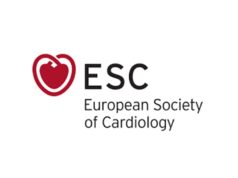A study of a Finish population, published online in Heart Rhythm, indicates that cardiomyopathy associated with obesity, alcoholic cardiomyopathy, and fibrotic cardiomyopathy are common causes of nonischaemic sudden cardiac death.
Lead investigator Eeva Hookana, Division of Cardiology, Department of Internal Medicine, University of Oulu, Oulu, Finland, and her co-authors reviewed post-mortem data from 2,661 consecutive victims of sudden cardiac death from the province of Oulu in Finland who died between 1998 and 2007. The vast majority of deaths were due to coronary artery disease (78.2%).
Of those who died of a nonischaemic cause (21.8%), the most common cause of death was cardiomyopathy related to obesity. This, according to Hookana et al, is a surprising finding. They reported: “Obesity is a well-recognised risk factor for coronary atherosclerosis and an association with ischaemic sudden cardiac death would be anticipated. However, the stronger association with nonischaemic sudden cardiac death in this study was not anticipated and is not yet explained.” They added that cardiomyopathy related to obesity was characterised by cardiomegaly, left ventricular dilation, and myocycte hypertrophy (in the absence of interstitial fibrosis or evidence of coronary artery disease).
“The existence of cardiomyopathy of obesity as a distinct disease association causing sudden cardiac death has not been generally recognised and better understanding and identification of this cardiomyopathy subtype are needed in the increasing population of obese patients.”
Alcoholic cardiomyopathy was the second most common cause of nonischaemic sudden cardiac death, and accounted for 25.8% of deaths in people aged 40 and 59 years. Previous studies have reported much lower incidences of alcoholic cardiomyopathy than the current study. According to Hookana et al, the reason for this difference may due to cultural differences in the consumption of alcohol. They wrote alcoholic cardiomyopathy was recently recognised as being an undiagnosed disease in Finland and reported that: “In the United States, the long-term heavy alcohol consumption is the leading cause of nonischaemic dilated cardiomyopathy with ethanol consumption per capita of approximately 8.7L in 2007. In Finland, ethanol consumption per capita was as high as 10.4L in 2008 and has been continuously increasing over the years.”
Idiopathic fibrotic cardiomyopathy, the third most common cause of nonischaemic sudden cardiac death in the study, was the most common cause of death in people aged under 40 years. As with the findings for cardiomyopathy associated with obesity and alcoholic cardiomyopathy, the incidence of fibrotic cardiomyopathy was higher than has previously been reported. Hookana et al, citing data from other studies as well as their own, wrote: “It seems evidence that lack of histologic examination in many previous studies has underestimated myocardial fibrosis as a potential factor leading to sudden cardiac death.”
Although they concluded that the results of their study needed to be confirmed in other Western populations before being generalised, Hookana et al reported: “Population-based strategies to reduce obesity and heavy alcohol intake are one of the means to reduce the number of nonischaemic sudden cardiac deaths. Research on reasons leading to myocardial fibrosis may be needed to further elucidate the mechanisms of this disease entity.”
Hookana explained that the responsibilities for such strategies would lie with politicians and healthcare reformers. She added: “Of course, our data clearly show that cardiologists and general physicians should be aware of increased risk of sudden unexpected cardiac death of obese subjects and heavy users of alcohol and inform their patients about these risks to motivate them for lifestyle changes.”












